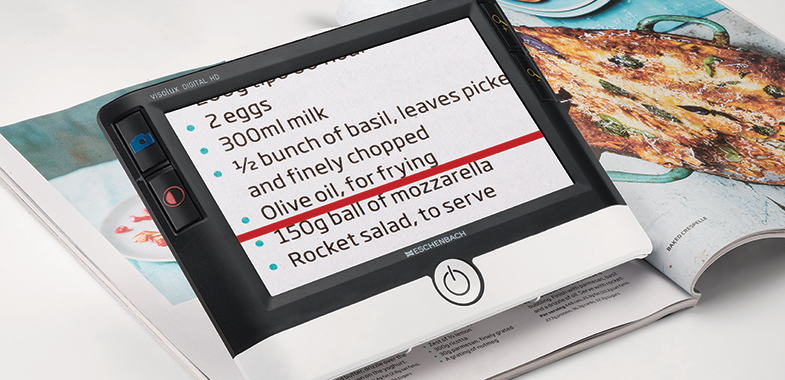
Retaining your independence after a low vision diagnosis
It may sound simple, but low vision has a variety of causes and life-changing impacts.
Low vision means that even with prescription eyeglasses, it is difficult to read, recognize others, or perform daily tasks.
Many ailments can cause irreversible damage to your vision: macular degeneration, glaucoma, retinal detachment, trauma, hereditary diseases, and countless more. The key to successfully managing low vision is to build a relationship with an optometrist and seek out the various treatment options that are available.
Some optometrists specialize in low vision rehabilitation. They examine, treat and manage the care of patients with visual impairments that can't be fully treated by medical or surgical intervention, conventional eyewear, or contact lenses. While a low vision specialist cannot help a patient to regain vision that has been permanently lost, they can help maximize the remaining vision to improve quality of life.
Each low vision exam is personalized for a patient’s specific vision problem. After the optometrist conducts a thorough history review, they will inquire about trouble with daily activities, such as reading, cooking, working, television viewing, and hobbies. This allows the doctor and patient to formulate a few attainable goals for improved visual function, while focusing on activities that are the most important to the patient. The evaluation usually includes an eye exam and tests to determine the current vision status. Then, a customized treatment plan can be formulated.
To determine if conventional glasses will be helpful, a low vision optometrist will perform a careful refraction using specialized equipment. The visual field may also be tested depending on the cause of vision impairment. By collecting this information, the optometrist is able to prescribe various treatment options, including low vision devices.
In addition, the optometrist will help the patient identify other resources for vision and lifestyle rehabilitation.
Most people with low vision can benefit from one or more treatment options. However, only a handful of people who could benefit from these options have seen a low vision optometrist.
- Spectacle-mounted magnifiers. A magnifying lens is mounted in spectacles (this type of system is called a microscope) or on a special headband. Both hands are then free for close-up tasks, such as reading.
- Handheld or spectacle-mounted telescopes. These miniature telescopes are useful for seeing longer distances, such as across the room to watch television. They can also be modified for near tasks, such as reading.
- Handheld and stand magnifiers. These are convenient for quick reading of things like price tags, labels and instrument dials. Both types can include lights.
- Video magnification. Table-top (closed-circuit television) or head-mounted systems enlarge reading material on a video display. Some systems can be used for distance viewing. These are portable systems, and some can be used with a computer or monitor. Image brightness, image size, contrast, foreground/background color and illumination are customizable.
Information taken from American Optometric Association Website
Countless other products or devices can assist people with vision impairment. These include large-print reading materials, talking books, talking wrist watches, self-threading needles, and more.
Most low vision patients can learn new techniques to help them perform daily activities with their remaining vision. In addition, government and private programs offer educational and vocational counseling, occupational therapy and rehabilitation training.
If you or someone you know suffers from vision impairment, contact L.O. Eye Care to schedule a low vision evaluation. The careful examination and customized treatment plan may be just what is needed to help regain some independence with daily activities.